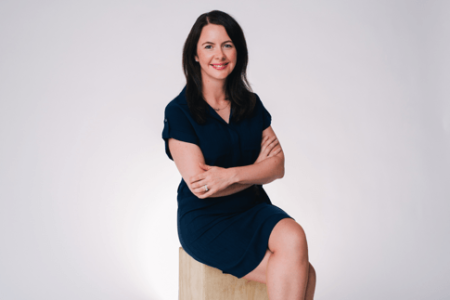Growth & Customers
How Zendesk built a scalable company culture to support major growth

When Fidelma Butler started in Zendesk’s People Operations department for the EMEA region in 2015, the customer service software provider was in a period of high growth—and it hasn’t let up. The company has since doubled its employee count to 2,000, expanded its reach from 150 to 160 countries, and added over 60,000 paid customers, for a total of 119,000.
Today, Zendesk has its sights set on another round of aggressive growth—this time, with Butler as senior director of employee success globally. The company aims to reach $1 billion in revenue by 2020, which is double its current revenue. For Butler, that means a focus on growing the company culture.
Butler says that scaling a solid culture is critical if Zendesk is to meet that ambitious goal. But it won’t be easy. Worldwide, worker engagement is trending down, especially for enterprises with more than 1,000 employees. However, when it comes to employee retention, companies that invest in their people far outperform companies that do not.
“We want to grow in a way that aligns with our values and keeps our engagement scores high,” Butler says, adding that company culture and values have “a multiplying effect” on Zendesk’s business priorities, including employee retention or revenue growth.
According to Butler, a deliberate, purposeful approach is key to scale culture at a high-growth company. Her advice? Decide which values will set your company on the path to success, and make sure every company-wide decision upholds those values.
Keep reading for her top three hard-won lessons about why culture and growth go hand in hand.
Fidelma Butler’s top three lessons in cultural maintenance

Fidelma Butler is Zendesk’s senior director of employee success
- Focus on company values. Welcome and reward behaviors that you want to see reflected in the company as a whole.
- Prioritize inclusivity. Give all employees a space to express themselves, and take seriously their suggestions for improvement.
- Communicate change. Be clear and involve all employees in change to make sure that it’s unifying change—not divisive.
Lesson 1: Welcome and reward behaviors that support your company’s values
As a company grows, its core values run the risk of dilution. Butler would advise any company approaching growth to sit down with the executive team and articulate company values. This way, everyone in a leadership role knows which values to emphasize when engaging in everything from recruiting to internal communications.
Butler says that instilling values in an employee starts on his or her first day at Zendesk. Take one of these values: Focus on relationships. During the onboarding process, new hires travel to regional headquarters to form relationships with colleagues from around the region while participating in training.
Moreover, company values are incorporated into training at all levels. For example, a recent surge in enterprise subscriptions necessitated that Zendesk’s salespeople receive training on how to approach the enterprise market. Butler ensures that a core Zendesk value, empathy, is central to that training because it’s one of the keys in the company’s approach to customer relationships.
Lesson 2: Inclusivity drives engagement
To sustain growth beyond 2,000 employees, Butler says that she emphasizes inclusivity just as much as she values diversity.
“Diversity is kind of a set number thing: being invited to the party. Inclusivity is actually feeling like you belong at the party.”
To help foster this inclusivity, Zendesk facilitates Employee Resource Groups (ERGs). These groups—which include Mosaic, the ERG for people of color; Women at Zendesk; and Pride, the ERG for LGBTQ+ identifying employees—meet regularly to discuss daily experiences and give employees opportunities to raise specific issues or ideas. During Zendesk’s company-wide, monthly, town hall meeting, groups can address the entire company. Women at Zendesk recently requested a formal women’s mentoring program, for example. Soon after, the group’s members sat down with Zendesk’s diversity and inclusion team to draft a plan.
Inclusivity makes growth more sustainable. When employees feel like leadership is listening to their ideas, they’re more likely to express themselves and invest themselves in the company long term.
Lesson 3: Involve every employee, at every level, in change
Butler’s team recently administered a survey that found that many Zendesk employees didn’t see the value in their individual work. As the company grew, individual roles became more abstracted from the organization’s mission.
The solution was to create a goal-oriented framework for the company. Zendesk’s executives select ambitious near-term goals, and Butler’s team helps to convey them to the full company. Then, middle managers define goals to make those larger goals a reality. This continues all the way down to employees embarking on their first professional career.
This process is designed to help employees map their work to the company’s overall direction and goals. For example, a recruiter—knowing that Zendesk’s leadership team wants to build more-diverse teams company-wide—might be more cognizant of the diversity of applicants, while an account executive might see her quarterly sales figures in the context of Zendesk’s $1 billion revenue goal.
Now that the company is more aligned, Butler says: “We’re all speaking a common language about what we’re trying to get to in 2020 and beyond.” The next step? Work to make the growth a reality.








Ask the author a question or share your advice